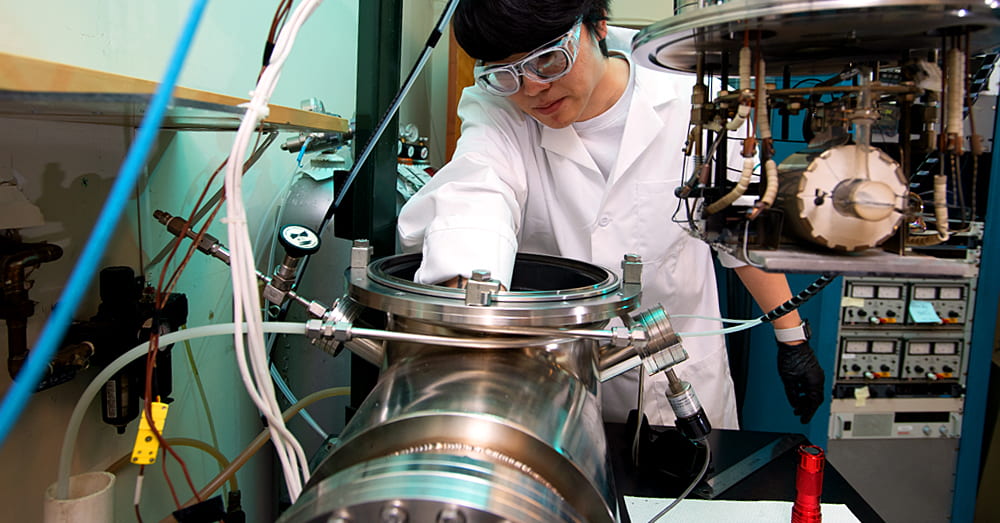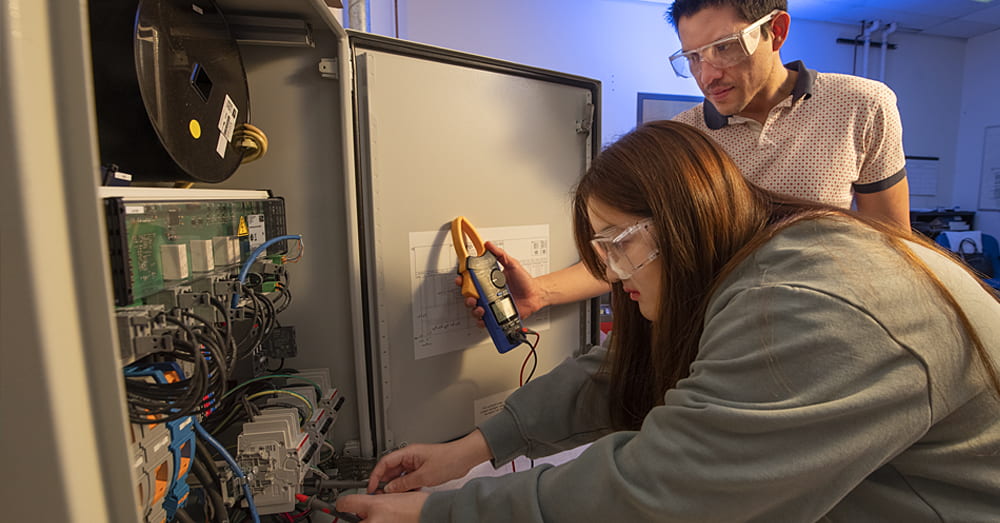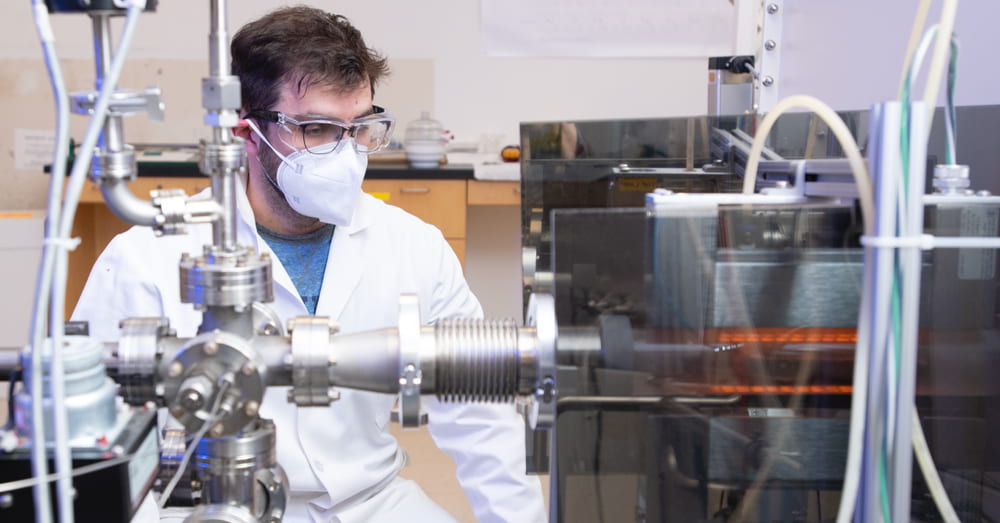Cutting Edge Technology
The Institute of Energy Conversion’s research on photovoltaic (PV) solar cell technologies encompasses materials and device fundamentals, energy efficiency, reliability, PV system integration and smart grids. Learn more of the technologies that we are implementing below:
Silicon PV
The production of solar modules based on Si wafers continues to grow globally at rates of greater than 30% per year, and forms the basis of a multi-billion dollar industry. Our research focuses on advanced high efficiency Si solar cell structures incorporating thin film defect passivation and contact patterning that are compatible with large volume manufacturing and long-term reliability.

Thin Film CdTe PV
Cadmium telluride (PV) has emerged as a competitive and low cost material for high quality thin film solar cells, with the US as a leading manufacturer of CdTe modules. Through a Dept of Energy award, our research focuses on improving solar cell costs and performance through development of in-situ doping for CdTe grown by commercially-relevant vapor transport processing.

PV Systems Integration and smart grids
To achieve a low carbon future, we must develop better methods to integrate PV modules at massive scale into our existing grid while enhancing the stability and resilience. We have recently established facilities for studying the role of smart inverters and batteries for grid support, and for PV charging of electric vehicles.

Thin Film Perovskite PV
Organic-inorganic metal halide perovskite thin film solar cell is an emerging high efficiency PV device that can alter the landscape of future PV market with potential for extreme low-cost, and flexibility. Our research efforts include development of high throughput manufacturable vapor deposition process of high efficiency, tunable bandgap, stable perovskite thin film solar cells.

Thin Film CIGS PV
Copper Indium Gallium Diselenide (CIGS) is a thin film approach to high efficiency, lightweight, and even flexible solar cells. Research at IEC focuses on alloying to engineer the optical absorption for partnering with other materials in next generation multi-junction solar cells. We have expertise in multiple methods for fabrication of the CIGS layers, solar cells and mini-modules for development of scalable processing methods.

New Types of PV Modules and Applications
IEC now has a 5 kW array of bifacial modules and irradiance sensors allowing research on how ground cover impacts their energy production. IEC is also leading efforts in the new area of Agrivoltaics – installing a cutting-edge sun-tracking 70 kW array at the UD Farm to study how movable solar modules can optimize PV electricity generation while enhancing shading and yield of crops underneath.
